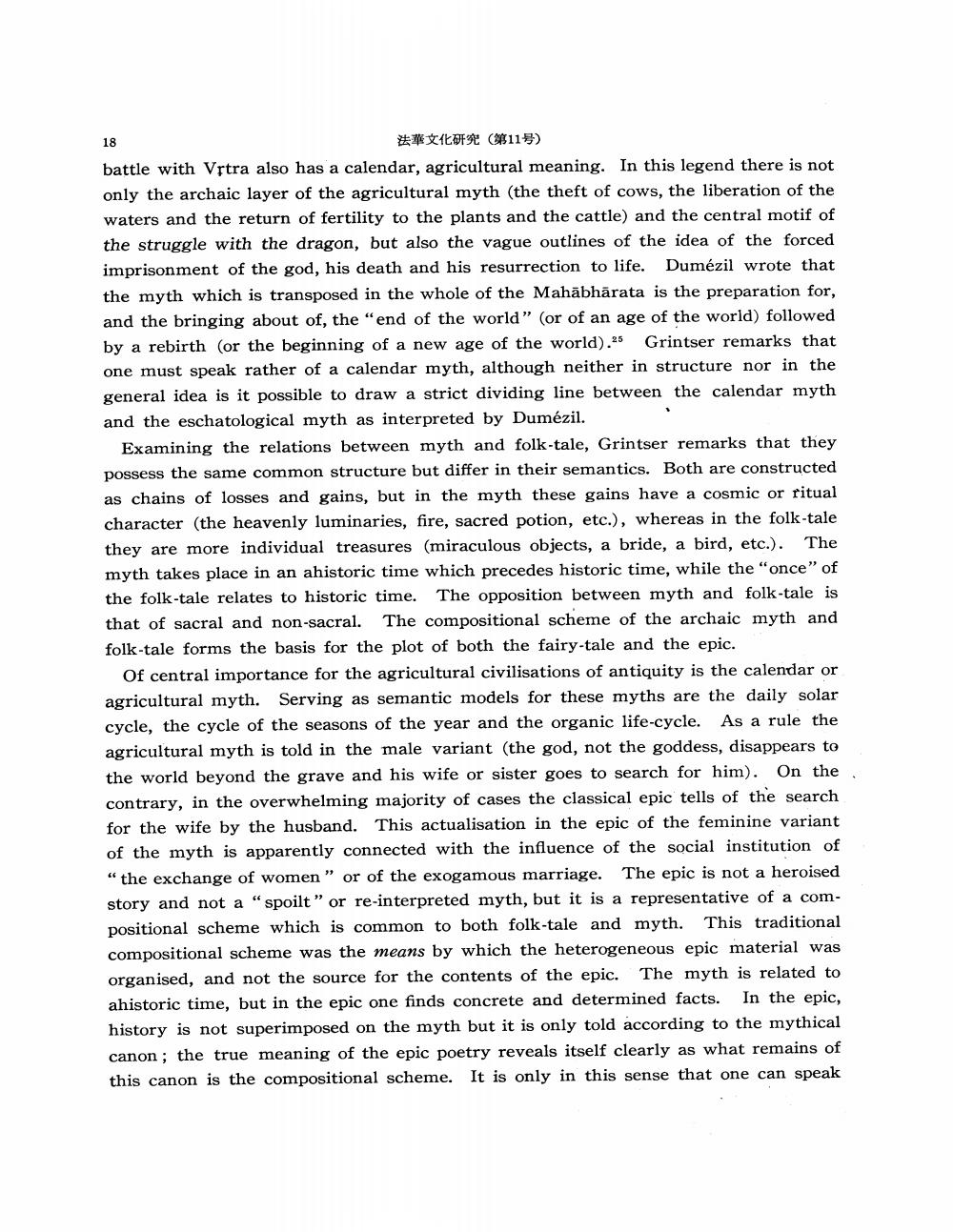________________
18
#**ILWER 11) battle with Vrtra also has a calendar, agricultural meaning. In this legend there is not only the archaic layer of the agricultural myth (the theft of cows, the liberation of the waters and the return of fertility to the plants and the cattle) and the central motif of the struggle with the dragon, but also the vague outlines of the idea of the forced imprisonment of the god, his death and his resurrection to life. Dumézil wrote that the myth which is transposed in the whole of the Mahābhārata is the preparation for, and the bringing about of, the "end of the world" (or of an age of the world) followed by a rebirth (or the beginning of a new age of the world).25 Grintser remarks that one must speak rather of a calendar myth, although neither in structure nor in the general idea is it possible to draw a strict dividing line between the calendar myth and the eschatological myth as interpreted by Dumézil.
Examining the relations between myth and folk-tale, Grintser remarks that they possess the same common structure but differ in their semantics. Both are constructed as chains of losses and gains, but in the myth these gains have a cosmic or ritual character (the heavenly luminaries, fire, sacred potion, etc.), whereas in the folk-tale they are more individual treasures (miraculous objects, a bride, a bird, etc.). The myth takes place in an ahistoric time which precedes historic time, while the "once" of the folk-tale relates to historic time. The opposition between myth and folk-tale is that of sacral and non-sacral. The compositional scheme of the archaic myth and folk-tale forms the basis for the plot of both the fairy-tale and the epic.
Of central importance for the agricultural civilisations of antiquity is the calendar or agricultural myth. Serving as semantic models for these myths are the daily solar cycle, the cycle of the seasons of the year and the organic life-cycle. As a rule the agricultural myth is told in the male variant (the god, not the goddess, disappears to the world beyond the grave and his wife or sister goes to search for him). On the contrary, in the overwhelming majority of cases the classical epic tells of the search for the wife by the husband. This actualisation in the epic of the feminine variant of the myth is apparently connected with the influence of the social institution of “the exchange of women " or of the exogamous marriage. The epic is not a heroised story and not a "spoilt " or re-interpreted myth, but it is a representative of a compositional scheme which is common to both folk-tale and myth. This traditional compositional scheme was the means by which the heterogeneous epic material was organised, and not the source for the contents of the epic. The myth is related to ahistoric time, but in the epic one finds concrete and determined facts. In the epic, history is not superimposed on the myth but it is only told according to the mythical canon; the true meaning of the epic poetry reveals itself clearly as what remains of this canon is the compositional scheme. It is only in this sense that one can speak




